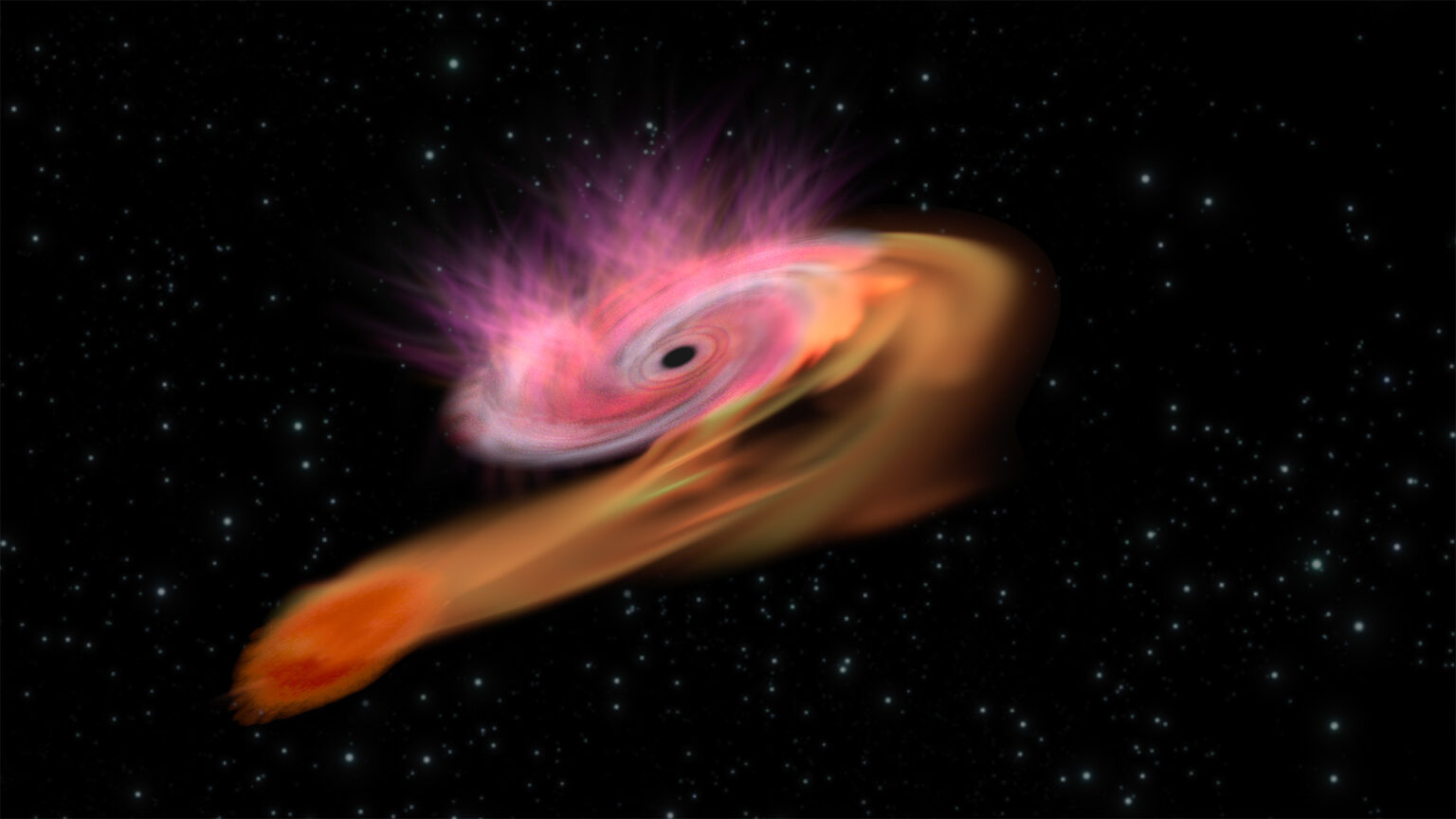
An international team of researchers discovered 18 tidal star destruction events (TDEs) by supermassive black holes that had previously gone unnoticed due to dust in space. These phenomena occur approximately once every 10,000-100,000 years in each galaxy and are accompanied by a huge release of energy.
According to scientists, due to dust that hides radiation from optical to X-rays, detecting stellar disasters is always difficult. Using infrared observations from NASA’s WISE (Wide-Field Infrared Survey Explorer) and NEOWISE missions, as well as other missions, researchers have captured these hidden events. Infrared waves are less susceptible to scattering and absorption by dust, which allows you to see hidden phenomena in space.
Among the detected events is the closest to Earth tidal star collapse located in a distant star-forming galaxy. This discovery sheds light on the demographics of TDEs in the local universe and allows us to explore a previously underestimated class of TDEs.
In addition, the detection of infrared signals from TDEs helps to answer the question of “insufficient energy”, suggesting that many TDEs were simply not detected due to the absorption of their radiation by dust and gas.
As a reminder, scientists have developed a new method that can significantly improve the search for dark matter in the Universe. The unique method is based on the study of the influence of dark matter on space-time. The new method proposes to use the gravitational effects that dark matter causes in space-time to detect it.

